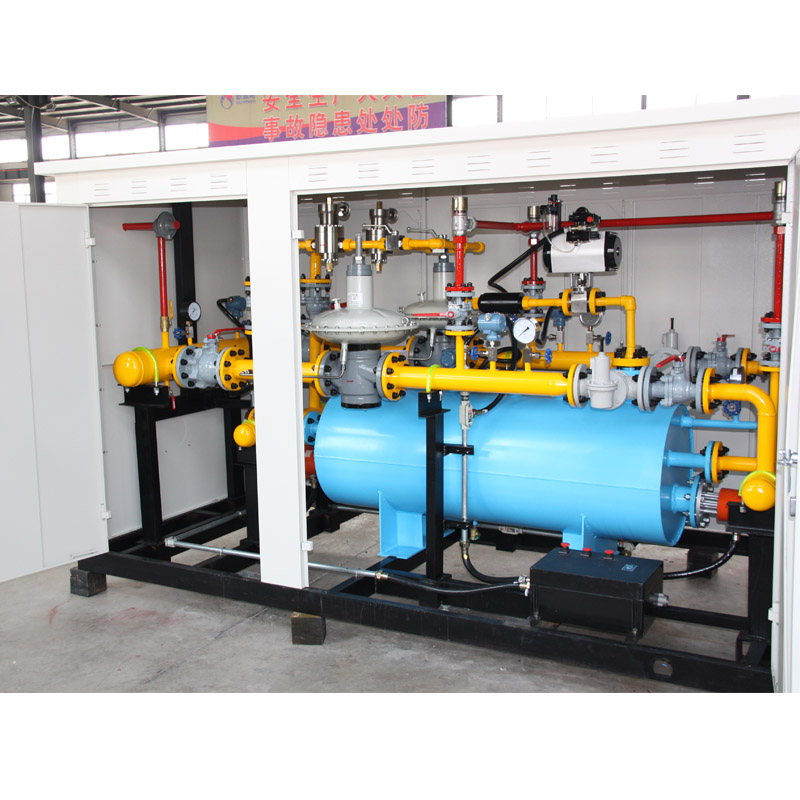
Dec . 03, 2024 18:54
Back to list
محطة تخفيض ضغط الغاز الطبيعي
Natural Gas Pressure Reduction Stations An Overview
Natural gas, a critical energy resource, plays a significant role in meeting the world's energy demands. One important component of its distribution system is the Natural Gas Pressure Reduction Station (PRDS). These stations are essential for ensuring that the gas arriving from production and transmission networks is delivered safely and efficiently to consumers.
Function and Importance
The primary function of a pressure reduction station is to decrease the high pressure of natural gas from transmission pipelines to a level suitable for distribution to consumers or for processing in various facilities. High-pressure gas is typically transported through large-diameter pipelines at pressures ranging from 200 to 1,500 psi (pounds per square inch). However, this pressure is too high for residential and commercial use, where the typical operating pressure is between 5 to 60 psi.
The importance of PRDS cannot be overstated. They ensure that the gas pressure is regulated to meet the specific requirements of different end-users, which is crucial for safety and efficiency. If the gas is delivered at too high a pressure, it can damage appliances and infrastructure, leading to costly repairs and safety hazards. Conversely, insufficient pressure can result in inadequate service and reduced efficiency.
Components of Pressure Reduction Stations
A typical pressure reduction station comprises several key components
1. Inlet Pipeline This is the entry point for high-pressure natural gas from the transmission system.
.
3. Safety Devices Safety is paramount in the gas industry. PRDS are equipped with various safety devices such as pressure relief valves, which prevent over-pressurization and protect downstream equipment from potential damage. These valves release excess pressure automatically if it exceeds predefined safety thresholds.
محطة تخفيض ضغط الغاز الطبيعي

4. Filtration Systems Natural gas may contain impurities and particulates. Filtration systems within the PRDS ensure that these contaminants are removed before the gas is distributed further.
5. Outlet Pipeline After being reduced to appropriate pressure levels, the gas is directed to the outlet pipeline, where it is distributed to consumers, homes, or industrial facilities.
Operational Challenges
Operating a pressure reduction station comes with its challenges. Both mechanical and environmental factors can impact the efficiency and safety of these systems. For instance, pressure fluctuations in upstream transmission pipelines can create operational challenges, necessitating advanced monitoring and control systems to maintain stable pressure levels.
Moreover, regulatory compliance is essential. PRDS must adhere to stringent safety and environmental regulations to prevent leaks and ensure reliable service. Operators must also continuously monitor the condition of the equipment and carry out regular maintenance to mitigate the risk of failures, which can disrupt service and pose safety risks.
The Future of Pressure Reduction Stations
As the demand for natural gas continues to rise globally, the design and operation of PRDS are evolving. Innovations in technology are leading to smarter pressure reduction stations that integrate advanced monitoring systems, real-time data analytics, and automation. These technologies can enhance safety, efficiency, and reliability while minimizing environmental impacts.
Furthermore, with the growing interest in alternative energy sources, PRDS may also need to adapt to accommodate biogas and other renewable gases in the future, ensuring that the infrastructure can support a more diverse energy mix.
Conclusion
Natural Gas Pressure Reduction Stations are vital for the safe and efficient distribution of natural gas. Their role in reducing the pressure of high-pressure gas to suitable levels for end-users cannot be underestimated. As technology continues to advance, the operation of these stations will become increasingly efficient and reliable, supporting the ongoing global transition to cleaner energy solutions.
Latest news
-
Safety Valve Spring-Loaded Design Overpressure ProtectionNewsJul.25,2025
-
Precision Voltage Regulator AC5 Accuracy Grade PerformanceNewsJul.25,2025
-
Natural Gas Pressure Regulating Skid Industrial Pipeline ApplicationsNewsJul.25,2025
-
Natural Gas Filter Stainless Steel Mesh Element DesignNewsJul.25,2025
-
Gas Pressure Regulator Valve Direct-Acting Spring-Loaded DesignNewsJul.25,2025
-
Decompression Equipment Multi-Stage Heat Exchange System DesignNewsJul.25,2025

